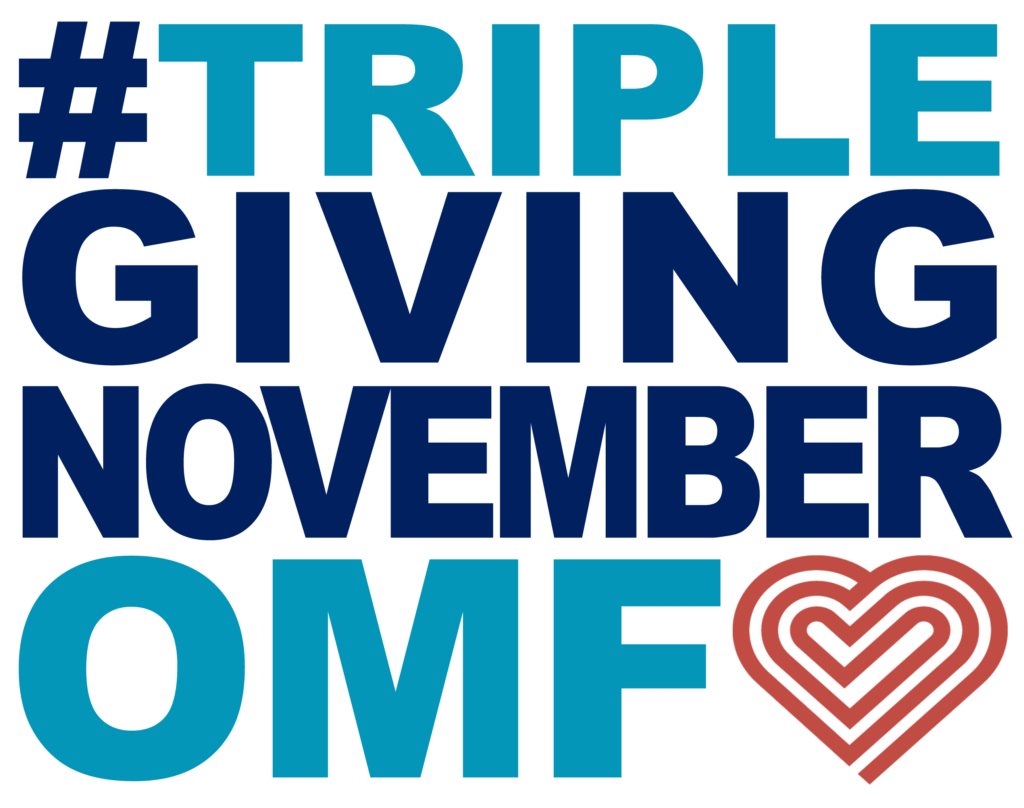Today is International Giving Tuesday, marking the final hours of our Triple Giving November campaign! There are just a FEW HOURS LEFT to have your donation tripled. Don’t wait—now is the time to give!
As we near the close of this powerful campaign, we’re excited to share an interview with Ron Davis, PhD, who discusses a groundbreaking new method developed by his team to assess neutrophils in ME/CFS patients.


The Heart of the Matter
- Neutrophils are an important part of the immune system that work to clear infections in the body, making them of interest in ME/CFS.
- Ron Davis, PhD and his team at the ME/CFS Collaborative Center at Stanford University have developed a platform for assessing neutrophils.
- Early results show that neutrophils from ME/CFS patients move slower than healthy controls. If these results are validated, the platform has potential to become a diagnostic tool for ME/CFS.
- Data collection is underway to validate the neutrophil assessment platform, so the study falls in the “Recruitment, Data Collection” stage of the research process.
Neutrophils are an important part of the innate immune system, which circulate in the bloodstream trying to identify and clear infections. They are traditionally quite challenging to study as they can’t be frozen and are easily activated during analysis. Neutrophils may provide interesting insight into ME/CFS, so Ron Davis, PhD and his team at the ME/CFS Collaborative Center at Stanford University have developed a new method for isolating and studying neutrophils.
Through their innovative platform, Dr. Davis’ team is able to isolate neutrophils as they move through a filter matrix towards an attractant. They can then view their movement through the matrix with a microscope and automatically track the neutrophils using code also developed by the team.
An important early discovery through the development of this platform is that ME/CFS patients’ neutrophils move slower than those from healthy controls. The team is currently working on validating that result now that the platform and its tracking code is developed—the completed platform allows them to analyze many more cells at a time with what’s called a high-throughput method. Ultimately, the neutrophil assessment platform has potential to be converted into a diagnostic tool, which is desperately needed in ME/CFS.
Dr. Davis’ study using the neutrophil assessment platform is starting to ramp up on data collection, landing it in the “Recruitment, Data Collection” stage of the research process.
Click Here to Read the Video Trancript
Video Transcript
Dr. Meadows: Hi everyone, and thank you once again for tuning into this week’s video. It is my distinct pleasure to be joined today by the director of the ME/CFS Collaborative Center at Stanford University, Dr. Ron Davis. Dr. Davis’s center was established in 2014 to use cutting edge, innovative and interdisciplinary research and technology development to really focus on ending ME/CFS. So welcome, Dr. Davis. Thank you so much for joining me today.
Dr. Davis: You’re welcome. Glad to be here and I’m glad to share stuff.
Dr. Meadows: So today, I wanted to ask you a few questions about one of your projects, the Neutrophil Assessment Platform. To start us out, can you give just a high level overview of how this project came to be? So it was maybe the rationale and background that led to it?
Dr. Davis: Well, this was largely idea of Vanessa that works in the lab. She’s a very good scientist and she thought we should look at neutrophils. And in talking with her about it, it became clear that most people don’t study neutrophils. And the reason, I think because of that, is that you can’t freeze them.
So an awful lot of immunologists simply take a blood sample, aliquot it out and freeze them all. And then they have their sample collection in the freezer. I know that Mark Davis does it this way, but I think almost all of them do it this way. The problem is the neutrophils don’t survive freezing, so therefore you don’t study them. And that just means there may be something in neutrophils that is very revealing about the disease that would never have been observed.
So her first effort was how she should purify them. She tried all the existing techniques and was not very happy with it. She was getting a lot of activation of the neutrophils and lysis. So neutrophils are part of the innate immunity, which is also very interesting to us.
They’re in the bloodstream and in the tissues and serving for infections and things of this type. And they have a lot of ability to solve infections or other types of abnormalities. If you have a bacterial infection, for example, they can basically explode and release their DNA and it makes a huge net and the bacteria can get trapped in that net and then they have other immune cells that can come in and digest them.
And so they’re like little time bombs in a way. That’s another reason people don’t study them, because you got to be really careful, you don’t activate them.
So we did some preliminary analysis and working out how to isolate them. And she decided to change the whole procedures after she tried all the existing ones. And she has a method now that’s pretty gentle. And it also requires the neutrophils to move, and they move through sort of a filter matrix that she set up so we know they’re active and functional and it gets rid of everything else and using special attractants to do them.
So she’s very happy with the procedure. And then she also then wanted to do some work on this. And she wrote a grant to Open Medicine Foundation and received it without much of a delay, and that allowed us to buy a good microscope and a setup which we need to do.
And then we had a very good mathematician that’s working with us, named Sharada, and she wrote a lot of programs to track those neutrophils when they move and identify them so that you could do this in automatic kind of mode. And so you can see them and then you can track all of them, whatever you put in for an attractant and see them move.
And so that’s streamlined the operation and allowed one to do a very large number of cells. And that’s now all set up. And a lot of people looked at that and say, wow, this is just great. I’d like to study neutrophils too now that you’ve, because you’re taking all of the hard stuff out of this.
And so Vanessa is extremely good.
So the question really then is, are there any kind of signatures about neutrophils that are indicative? And of course, the technical problem is that we need a flesh blood sample, we can’t freeze them, so we need a steady stream of patients coming in.
And she set up to also collaborate with Michelle James, who does scanning and share facilities and resources so she can have access to some of the stuff that we have. She’s also really interested in the neutrophil project. And so when she gets a patient and she will notify us and then we’ll go over and, and collect a blood sample and then we can proceed from that. They won’t stay forever. So you’ve got to do your experiments and wait for the next patient.
Dr. Meadows: That’s wonderful. It sounds like it’s a really innovative platform that is going to be really useful for a lot of different people if they can adapt it similarly to how Vanessa has. So based on this, it sounds like you’re getting these fresh blood samples and sending them through the platform. What are the kinds of data that you’re getting out of this and how is it maybe going to be related to ME/CFS or control groups, or how are you comparing those?
Dr. Davis: Well, one of the things that came out in the earlier efforts was the fact that neutrophils from ME/CFS patients actually move slower. Now, that was done by just visually and tracking them and taking pictures. And it was brute force method that would get repeated to see if it’s valid. And now you can do thousands and thousands of cells.
And the reason for that’s just something we need to know. And the second thing is that that actually could be converted into a diagnostic. You give them an attractant and then they see if they’ll move for that towards that attractant. And that’s something we might do in a sort of routine fashion, looking at how fast they move just to see if it’s consistent.
We do need a diagnostic test. Everybody’s looking for a biomarker. That may be really hard to do. I just don’t know. And then some people do this by measuring lots of different things and then combining them into a biomarker. That also could be expensive. I would like to make it so it’s actually fairly inexpensive.
So we’d have to do something about how to visualize it, and not necessarily with an expensive microscope, but I think that is possible. We’re also doing a collaboration, Johnny Wong at UC Davis on red cells. He is set up now to do impedance detection of the red cells. So he can put them in a small channel and then look at where the two detectors are there. And you can see the cell coming into the channel and then leaving the channel and you can time that.
And that is all done on a little simple like glass slide. That whole thing, he said, would probably cost a dollar. And then there would be an instrument that would do the impedance detection and timing. That would also be a fairly small instrument. I suspect we can do that. But the neutrophils could be done basically in the same sort of way.
Dr. Meadows: That’s fascinating. I mean, that would be a wonderful way to translate that to the clinic and have that diagnostic test, just like you said.
So can you give just a brief update on kind of what stage the project is now? I know you said the platform is done and you’ve seen some of the evidence of low motility of the neutrophils. Are you still collecting data? Are you focused on analyzing things?
Dr. Davis: We’ll really start to do more data collection now. We have everything sort of set up. The missing component has been patients. And that’s because of the pandemic. And patients rightly did not want to come into the lab to give a blood sample. We’re trying to set up and have in the past set up where we collect outside the lab, because we like collecting in the lab because it’s real close to everything, the processing. But it doesn’t have to be that way, especially for safety of the patients.
And recently there’s been high level of the coronavirus, at least in our area. It’s come way down recently and that will help a lot. Anyway, so that project can now start to do things like some molecular analysis of the contents of them, what genes and just a whole collection of things. There’s not been very much work done on neutrophils.
This is all going to be exploratory and we’ll try to be as exploratory as we can. And see are there something useful with the neutrophils that actually might be helpful in diagnosing diseases or in fact, I’m not sure any treatments are going to come out from this. But then we don’t know, because nobody’s done anything.
So that’s basically the attitude we have, is that we look for something that nobody has been looking at and then set up a way to analyze that and explore that. So I’m hoping that that will be very useful at least. It’s another thing that takes away some of the large number of unknowns.
And we don’t really mind doing something that’s hard. The nice thing about doing something hard is you probably won’t have everyone’s competition, so you don’t have to worry about, you know, it’s not a problem. It’s just that there’s a lot of people doing it. You don’t know what they’re doing and you don’t want to make a lot of duplications because there’s so little money in this field that you want to try to leverage everything as best as possible.
Dr. Meadows: Yeah, absolutely. Using resources wisely.
Dr. Davis: Exactly! So we may use this setup for other things. Vanessa has set up now to be able to do a sort of a clinical analysis of the blood sample where it will count all the different types of cells that are there and basically give you a good report about what’s there. And that’ll be routine. It’s a small sample goes in and it will look at all the standard high level clinical analysis of what’s in the blood.
And we tried to do that in the past, but it’s been hard and it’s been done sort of manually. This is not going to be done automatically. So every sample will get checked, collected like this.
Dr. Meadows: That sounds like some great data to have to go along with all the other things that you’re hoping to explore. All right, well, I think given that we can wrap things up, so thank you so much, Dr. Davis, for your time. I know we really appreciate that you have taken the time to talk to me today and sharing this wonderful update on such an exciting project.
Dr. Davis: I’m very happy to do these updates because it’s usually a very long time. People don’t recognize this. If you do a fairly in depth study, it may take you six months to complete the study or even a year, but then it can take two years to get it accepted for publication. And it usually takes twice as long to get it accepted once it’s all done and written up.
And I just found that unacceptable in terms of talking to the patients. And that’s one reason why I think these little discussions of where we’re at doesn’t jeopardize the publication, but still give patients an idea of what’s happening. They need to know that people are working pretty hard and there’s some really good scientists that are working on this.
Dr. Meadows: Absolutely. Well, thank you for being one of those scientists.
Dr. Davis: Thank you very much.
If you would like to be considered for future research opportunities, please consider joining our OMF StudyME Registry.

Don’t miss out on the chance to have your donation tripled! Let’s make these final hours count. It’s time to reduce the suffering and symptom severity faced by people with ME/CFS and Long COVID. We need your help to make it a reality. Click the button below to donate
And remember, there’s more than one way to support our cause. OMF also accepts gifts of stock, cryptocurrency, real estate and retirement assets.


